Ray-Esque: Satyajit Ray's famous friends and encounters
Ray-Esque: Satyajit Ray's famous friends and encounters
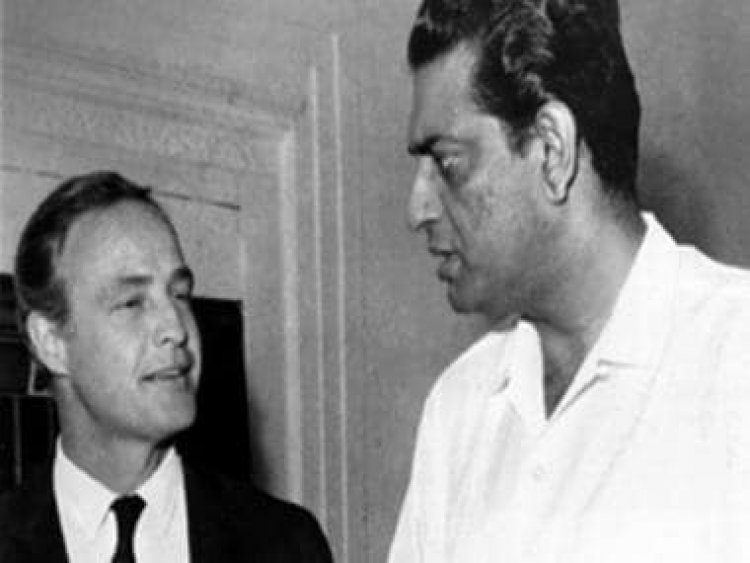
Satyajit Ray and world famous science fiction author Arthur C. Clarke were friends from the sixties. Ray penned The Avataar, which was later rechristened as the Alien in the mid-sixties and Columbia Pictures expressed interest in turning the screenplay into a film. Almost coinciding with this development, famed movie director Stanley Kubrick was set for the shooting of his path breaking film, 2001: A Space Odyssey. Clarke had co-authored the script of 2001: A Space Odyssey with Kubrick. Interestingly, correspondences between Clarke and Ray began from the time Satyajit Ray scripted The Avataar. Clarke showed deep interest in the screenplay and felt it would make for a great movie. Ray had sent a concise version of The Avataar to Clarke. This brought the maestro and Clarke closer.
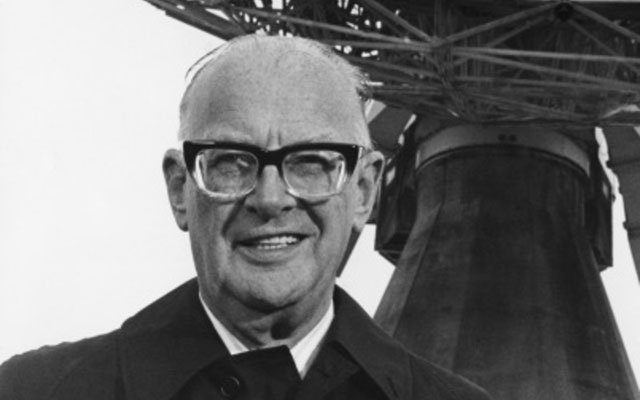
“Besides, with every letter of his, Clarke used to enclose an itinerary which outlined his schedule for the next three or four months, the conferences he would attend and the like. Father would wonder with admiration at such meticulous planning.
“Clarke had invited father to the sets of 2001: A Space Odyssey. Clarke was also present on the sets. Father was the only outsider whom Kubrick allowed on the sets of the film. He was a big fan of father. He admired Charulata (The Lonely Wife). Father had a look around the sets of the movie on the floor and then visited Kubrick’s office in the Shepperton Studios, where the shooting unfolded, to chat up with Kubrick. Father also clicked a photograph of Kubrick,” reveals Sandip.
Clarke had written to Satyajit Ray informing him that he was penning a new science-fiction novel titled, Rendezvous With Rama. There is a passage in the novel which talks of characters in the novel embarking on space travel while watching a film. Extremely interestingly, the movie that they are viewing is Satyajit Ray’s unforgettable maiden film, Pather Panchali. “Then, when Rendezvous With Rama was published, Clarke sent a signed copy of the book to father, Sandip recalls.”
“In fact, another sci-fi literary great, Ray Bradbury had written to father after watching Satyajit Ray’s early films, including obviously The Apu Trilogy, and being thoroughly moved. Correspondences between Bradbury and father ensued in this wake. Bradbury’s letters are definitely still with us,” says Sandip, underlining these relationships.
Sandip goes on to inform that his great father and the British author H.R.F. Keating, who became famous writing Inspector Ghote, the detective series on the Mumbai police, struck up a close friendship. “Father was extremely impressed with series because it was very authentic. I am not aware whether Keating had visited Mumbai. Keating and father shared several correspondences and became friends. A film was also made on the Ghote series with Nasseeruddin Shah playing Inspector Ghote.
Then, Satyajit Ray and the masterly Western Classical conductor Herbert Von Karajan met up at Oxford University when Ray had visited the hallowed academic institution to receive the Honorary Norton Professorship. “Father trunk-called us from Oxford saying that he had a chance to meet the masterful conductor. Karajan had told father that he had boarded a plane to Oxford. Karajan was a licensed pilot. Father was deeply fascinated with a conductor who was also a pilot,” reminisced Sandip.
Satyajit Ray and the violin maestro Yehudi Menuhin were also friends. They had caught up with each other in Bombay. Menuhin had seen a clutch of the master’s films. “Then, around 1969, the two again set up a meeting in Bombay, when Menuhin had visited the city for a concert. Father informed Menuhin that he would screen for him his new film. He brought Menuhin abreast of it and told him it was a musical fantasy. Menuhin set aside time to watch the film. So, we all watched Goopy Gyne Bagha Byne together in Bombay. The screening took place at the Blaze Minuet, which was a mini theatre in Bombay, a wing of Blaze Advertising. We had great fun,” says Sandip, his face excited.
Since Satyajit Ray and the famous Calcutta pianist (and paediatrician) Adi Gazder were close friends, when the world renowned cellist Mstislav Rostropovich visited the city, Gazder had invited Rostropovich and a select group of friends to his home. This was around 1985-86 when Ray had returned from Houston after his cardiac surgery. “Rostropovich was a huge admirer of Pather Panchali and had seen other films of father. I didn’t accompany my mother and father on that occasion. But, handed the sleeve of a Rostropovich VHS to father for an autograph of the famous cellist. When Rostropovich saw father walking into the drawing room, he went flat on the carpet in the manner of offering his ‘pranams’, to him. Father was extremely embarrassed. ‘I was waiting for the day I would meet you. I am a huge fan of yours,’ he told father,” says Sandip, his face beaming. “Besides, Rostropovich was happily surprised by father’s knowledge of Western Classical music. The two enjoyed each other’s company tremendously. Father spent a long while conversing with Rostropovich and returned home late in the evening. He had also signed my video sleeve and written a touching message. It’s still there with me. Father, of course, was naturally also present at his concert in Calcutta,” Sandip adds.
The master enjoyed a close friendship with the renowned British film director from the early days when he used to contribute film articles to the famous British film journal, Sequence. And, then, of course Marie Seton, the writer and Ray’s biographer, was a close companion. Lotte Eisner, the German-French writer and film critic was a huge Satyajit Ray admirer. All these figures fought tooth and nail for Pather Panchali when the film was screened at an unearthly hour on the first night at Cannes when virtually none of the jury members were present. When the Cannes officials came under pressure from the film fraternity, Pather Panchali was unveiled a second time the next evening and lifted the Best Human Document award.
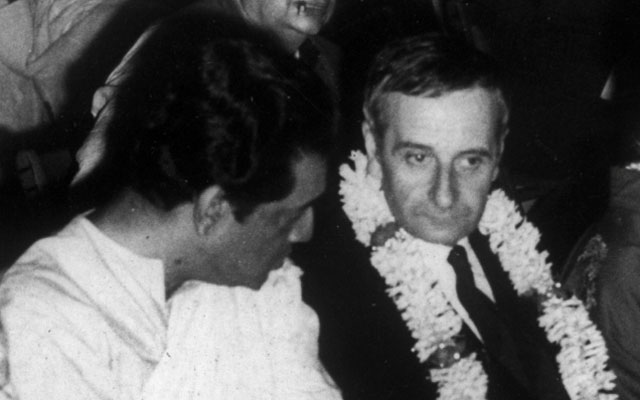
“Father had numerous interactions with various reputed film critics which included David Robinson, Derek Malcolm of The Guardian and Gene Moskowitz who would write for the famous Hollywood magazine, Variety. Then, the owner of Japan’s Towa Company, which would distribute world cinema in Japan and distributed father’s movies, too, Kashiko Kawakita was a huge admirer and friend of father’s. Since she was a distributor of world cinema, Kawakita would travel to different international festivals. At one time, my father used to frequent overseas festivals and bump into Kawakita. Everytime, Kawakita visited Calcutta, she would invariably bring presents for our family. She had brought along two cameras for me. In step, she brought music albums for father and me. She was always extremely large-hearted about gifts,” says Sandip with frankness. In fact, the meeting between Japanese film great Akira Kurosawa and Satyajit Ray, in Kyoto, was set up by Madam Kawakita.
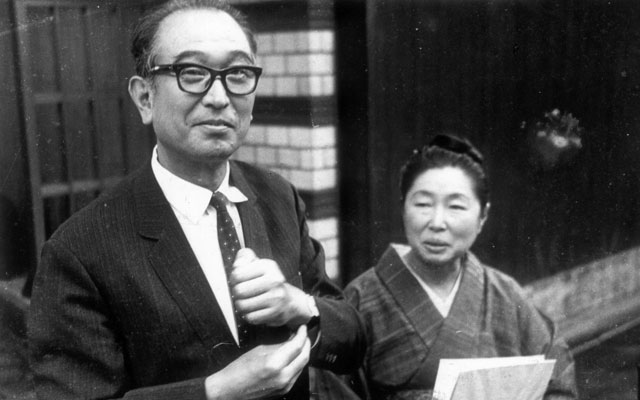
When the master had visited Columbia Pictures in Los Angeles for discussions on the Alien, he had met actors like Steve Mcqueen and Peter Sellers. He had also chanced to meet Sidney Poitier and Rod Steiger at the Berlin Film Festival. Marlon Brando had also called Satyajit Ray, on a visit to Calcutta, and set up an evening conversation at the Firpo’s restaurant. Renowned film critic Amita Malik had also organised and lengthy chat between Ray and Brando on Doordarshan. The recording, sadly, is now lost.
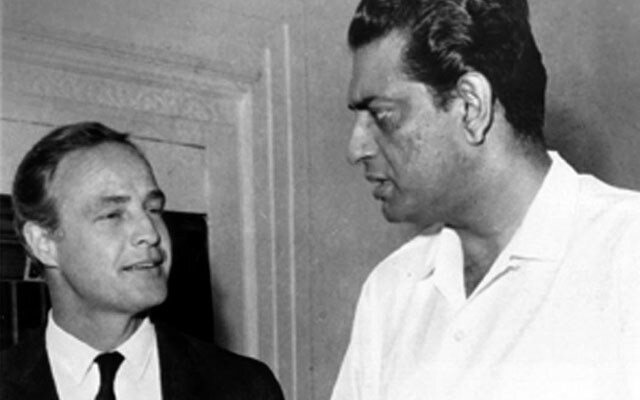
“Besides, father was on the jury of various international festivals where he would be in company of famous film directors. I remember a festival in Delhi where my father was jury chairman. We watched films with directors like Frank Capra, Nagisa Oshima, Thorold Dickinson and Shadi Abdel Salam,” reminisces Sandip. Celebrated movie directors such as Elia Kazan and Louis Malle had dropped at the Ray household to converse with the maestro. Malle discussed his documentary on Calcutta with Ray.
“Another unflinching admirer of father was the famed Hollywood director John Frankenheimer. He was at a festival and had come across to meet father. He was a trifle taken aback, to begin with, by father’s height. Although, he, too, was tall and handsome. Irvin Kershner was also his friend. He had directed films like The Empire Strikes Back and Eyes of Laura Mars. Sir Richard Attenborough was another friend and unshakable admirer of father.
“Then, well-known American actor Fredrick March travelled to Calcutta with his wife. This was probably in the late sixties when we were living in our Lake Temple Road home. On meeting him, father had asked March about his transformation from Jekyll to Hyde in the film Dr Jekyll and Mr Hyde. But, March had shied away from revealing that secret. He was forbidden to talk about it, he had frankly told father. I was too young then to understand the import of father’s question to March. But, realise now that it’s probably the most incredible changes from Jekyll to Hyde amongst the Dr Jekyll and Mr Hyde films that have been made,” confesses Sandip. “Then, he met Claudette Colbert at the Tehran Film Festival. Once, the Cannes Film Festival authorities invited all previous awardees. Father naturally ran into several awardees on that occasion. There have been various stray meetings like these.”
It so happened that Danny Kaye had journeyed to Calcutta as a Unicef ambassador. Satyajit Ray was naturally invited to meet Danny Kaye. “Father met up with him with my autograph book tucked away in his pocket. That signature, too, is still with me,” says Sandip with a nostalgic smile.
Yet another memorable evening was Satyajit Ray’s rendezvous with Ingmar Bergman during Ray’s trip to Sweden. According to Sandip, the Swedish Film Institute had organized an interaction between the two great film makers and Satyajit Ray’s interface with other Swedish film personalities.

“Father was also in the company of Akira Kurosawa and Michelangelo Antonioni in the early seventies Delhi international festival. Besides, legendary French photographer Henri Cartier-Bresson had dropped by at our Bishop Lefroy Road home to chat up with father. Both mutually admired each other. Bresson regretted later that he hadn’t done a series of shots on father. ‘It’s a pity,’ he had said later. ‘He’, meaning father, ‘is so photogenic’. Subsequently, father wrote the foreword to Cartier-Bresson’s photographic tour-de-force on India. Bresson kept in touch with father till virtually the end. Then, we travelled to France and were present, together with writer Amitav Ghosh and other personalities, at the screening of father’s last film Agantuk. Cartier-Bresson had sent a recorded speech in French on another occasion in honour of father,” recollects Sandip.

He also remembers the day, in the mid-eighties when Akira Kurosawa had sent a personal copy of a VHS of A Rhapsody in August, his latest film, with a covering letter requesting and urging Satyajit Ray to watch the film and write something positive to help him get a distributor. “Father was absolutely shattered. He viewed the film and wrote out a moving and beautiful letter for Kurosawa. Sadly, Kurosawa was not very popular in his own country. He had also attempted suicide because he had run out of producers and distributors. Famed Hollywood directors like Francis Ford Coppola and Steven Spielberg extended their hand of support to Kurosawa.
“Kurosawa and Sir Richard Attenborough invariably mailed Christmas cards to father every year. Arthur C. Clarke would also join in more or less regularly. Kurosawa would, in fact, draw the cards himself, print them and then send them to father. Those correspondences are in our archives. Of course, we naturally don’t have father’s replies. Father’s circle of famous friends was very wide and cut across various fields. Besides, all festival directors were very close and would be in touch with him for his next film,” says Sandip with a justified hint of pride.
Renowned author Salman Rushdie’s Haroon and The Sea of Stories sees Goopy and Bagha as two of the characters in the novel. “Besides, Rushdie journeyed all the way to Chakdighi, with his friends, to watch Ghare Baire’s (Home and the World) shooting. We were suddenly informed that Salman Rushdie was on his way. Had it been Calcutta, we would have still understood. But, he took all the trouble of travelling to a remote corner in Bengal just because it was father’s film.
“Father’s spread of friends was endless. Actually, when he received the Honorary Oscar, the extent of support he drew from Hollywood names who voted for him is humungous. We were overwhelmed. French actors like Gerard Dupardieu and Isabelle Huppert have unalloyed admiration for their father,” Sandip informs. Dupardieu, in fact, flew to Calcutta with producer Tosca du Plantier to discuss the production of the master’s Shakha Prosakha (Branches of A Tree) by Plantier’s Erato Films.
Satyajit Ray belongs to the world. And, the world enraps him.
Ashoke Nag is a veteran writer on art and culture with a special interest in legendary filmmaker Satyajit Ray.
All images from Satyajit Ray Society.
Read all the Latest News, Trending News, Cricket News, Bollywood News, India News and Entertainment News here. Follow us on Facebook, Twitter and Instagram.
What's Your Reaction?



























































